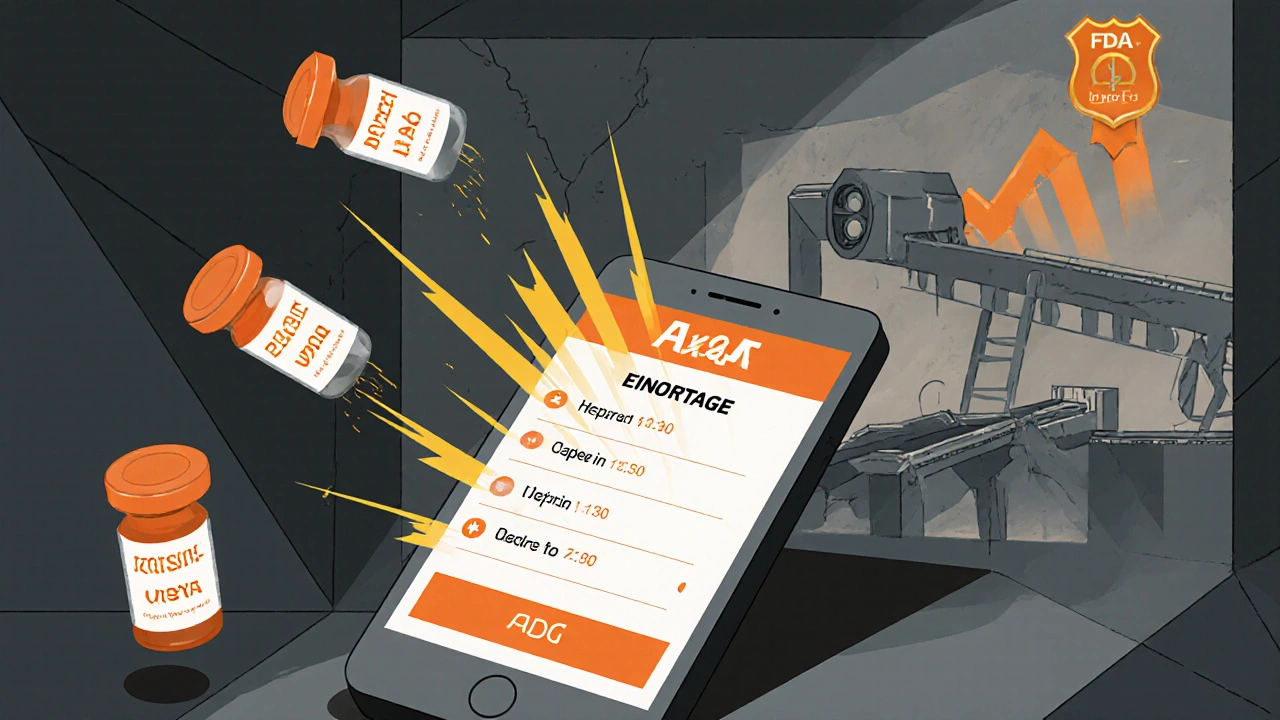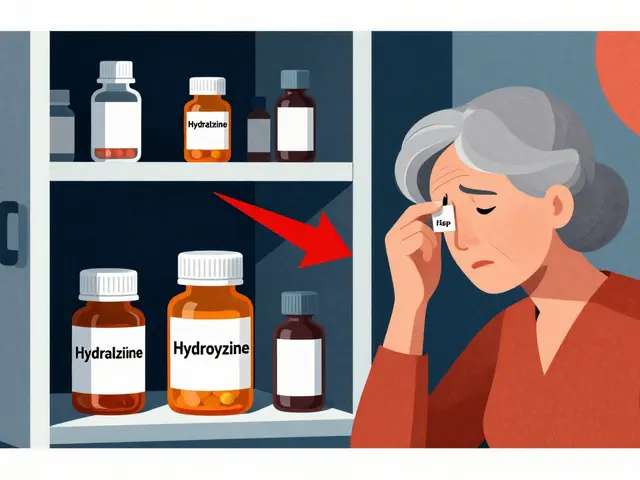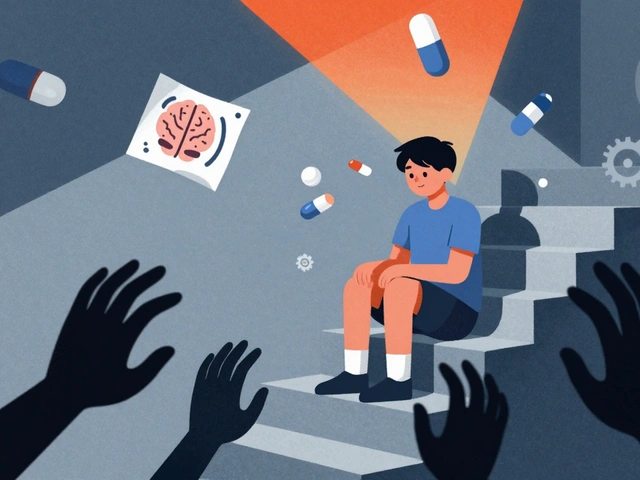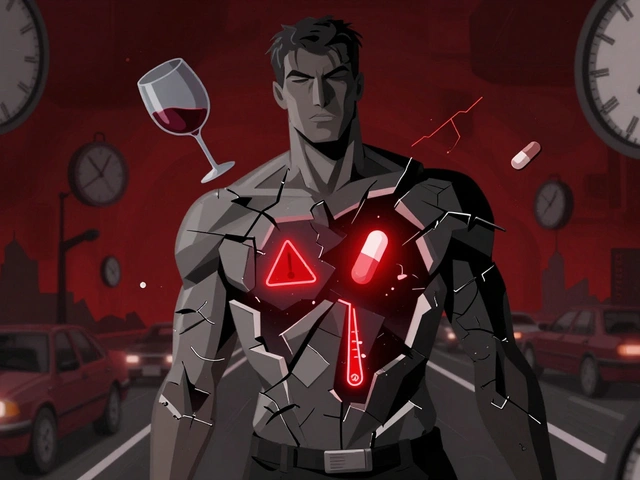
What is the FDA Drug Shortage Database?
The FDA Drug Shortage Database is the U.S. government’s official source for tracking which medications are running low or unavailable across the country. It’s not a prediction tool or a forecast - it’s a real-time record of drugs where demand is outpacing supply. This database is updated daily by the Food and Drug Administration’s Center for Drug Evaluation and Research (CDER), and it’s free for anyone to use - patients, pharmacists, doctors, or caregivers.
Since 2012, manufacturers have been legally required to notify the FDA when they expect a shortage. If they don’t, they can be fined up to $10,000 per day. That’s why this database is the most reliable source for confirmed shortages. As of mid-2025, there are typically between 280 and 320 active shortages listed, mostly affecting generic injectable drugs like antibiotics, anesthetics, and heart medications.
How to Access the FDA Drug Shortage Database
You can check the database in three ways: through the website, the mobile app, or the public data feed.
- Website: Go to www.accessdata.fda.gov/scripts/drugshortages/default.cfm. This is the main interface. No login needed.
- Mobile App: Download the free "FDA Drug Shortages" app from the Apple App Store or Google Play. It works on iOS 12+ and Android 8+. The app sends push alerts when a drug you’re tracking goes into shortage.
- Data.gov: For developers or institutions, the FDA publishes a machine-readable dataset updated weekly. This is useful for hospitals or pharmacies building internal tracking systems.
How to Search for a Specific Drug
Searching is simple, but there’s a key detail most people miss: you need to search by the generic name or active ingredient, not the brand name.
For example, if you’re looking for insulin, type "insulin" - not "Humalog" or "Lantus". The database lists drugs by their chemical name. If you’re unsure of the generic name, use the "Therapeutic Category" filter to narrow it down to things like "Cardiovascular," "Antibiotics," or "Diabetes."
Once you find the drug, look for the exact National Drug Code (NDC). Why? Because a shortage might only affect one strength or formulation. For example, the 500mg tablet of amoxicillin might be short, but the 250mg capsule is still available. The NDC tells you exactly which version is affected.
Understanding the Status and Reason Fields
Each drug listing shows three key pieces of information:
- Status: Is it "Current," "Resolved," or "Discontinued"? "Resolved" doesn’t mean it’s back in full supply - it just means the manufacturer says supply now meets demand. Stock might still be tight.
- Reason for Shortage: This is the most important field. 68% of shortages are due to manufacturing or quality issues - like a factory failing inspection or a raw material delay. Other reasons include raw material shortages, discontinuation, or increased demand.
- Estimated Duration: The FDA gives a projected end date. But don’t treat this as a guarantee. In 2023, only 58% of these estimates were accurate. For drugs listed as "resolved," always check with your pharmacy before assuming it’s fully available.
Some entries include "Extended Use Date" information. This means the FDA has approved using the drug past its printed expiration date. You’ll find this on a separate page: "Search List of Extended Use Dates." It’s common for critical drugs like epinephrine or heparin.

FDA vs. ASHP: Which One Should You Use?
Many people also use the American Society of Health-System Pharmacists (ASHP) Drug Shortages site. So which one do you trust?
The FDA database is more authoritative - it’s the only one backed by federal law and manufacturer reporting requirements. It includes NDCs for every listed drug and is updated daily.
But ASHP is better for clinical decisions. It gives you alternatives, dosing adjustments, and management tips. For example, if your patient’s usual antibiotic is short, ASHP might suggest a different class of drug with similar effectiveness. The FDA won’t tell you that.
Best practice: Check the FDA first to confirm a shortage exists. Then go to ASHP to figure out what to do next. A 2024 survey found 74% of pharmacists use both - FDA for verification, ASHP for action.
Common Mistakes and How to Avoid Them
Even experienced providers make errors when using the database.
- Mistake: Assuming "resolved" means the drug is back in stock. Solution: Always call your pharmacy or wholesaler to confirm actual inventory.
- Mistake: Searching by brand name. Solution: Always use the generic name or active ingredient.
- Mistake: Ignoring the NDC. Solution: If the shortage says "500mg tablet," make sure your prescription matches that exact formulation.
- Mistake: Not checking for extended use dates. Solution: For life-saving drugs, always check the extended use list - it could mean the difference between treatment and delay.
How to Report a Shortage You’ve Seen
If you’re a pharmacist, nurse, or doctor and you notice a drug is unavailable - but it’s not listed on the FDA site - you can report it. This helps the FDA catch shortages faster.
Go to the FDA website and click "Report a Drug Shortage." You’ll need your email and details about the drug (generic name, strength, manufacturer, and how long it’s been out). You can also email [email protected] directly.
Don’t wait. If multiple providers report the same issue, the FDA can push manufacturers to respond faster.

What’s New in 2025?
The FDA has been making improvements based on user feedback.
- In July 2024, they added filters for dosage form (tablet, injection, etc.) and manufacturer - so you can now find exactly what you need without sifting through unrelated products.
- By Q1 2025, the database will link to the National Association of Boards of Pharmacy’s wholesale distributor list. This will help track if a shortage is happening because of distribution problems, not just manufacturing.
- The mobile app is getting barcode scanning so you can point your phone at a drug package and instantly check its status.
- AI models are being tested to predict shortages before they happen - but this is still in early testing. Don’t rely on it yet.
What to Do If a Drug You Need Is Short
If you’re a patient and your medication is listed as short:
- Don’t stop taking it without talking to your doctor.
- Ask your pharmacist if there’s an alternative brand or generic.
- Check if your prescription can be switched to a different strength or formulation.
- Call your insurance - sometimes they can approve a higher-cost brand if the generic is unavailable.
- Use the FDA app to get alerts if your drug is resolved.
For chronic conditions like diabetes, heart disease, or epilepsy, a shortage can be dangerous. Work with your care team early. Don’t wait until you run out.
Final Thoughts
The FDA Drug Shortage Database is the most accurate, legally backed source for tracking medication availability in the U.S. It’s not perfect - delays happen, estimates aren’t always right, and it doesn’t give you clinical advice. But it’s the only tool that tells you what’s truly unavailable nationwide.
Use it like a flashlight in the dark: it won’t solve the problem, but it shows you where the hole is. Combine it with ASHP’s guidance, talk to your pharmacist, and stay informed. When it comes to your health, knowing what’s available - and what’s not - is the first step to staying safe.









15 Comments
Also the NDC tip? Game changer. I always just looked up the brand name and got confused.
Did you know 70% of these 'shortages' are just manufacturers playing games to jack up prices? The FDA doesn't care. They're too busy taking pharma money to actually fix anything. You want real transparency? Ban generic drug monopolies first.
Also - emoji alert 🤡💉💸
I used to panic every time my anxiety med went missing. Now I just check the FDA app, find the NDC, call my pharmacy, and boom - I’m covered. No more guessing. No more fear. This isn’t just info - it’s peace of mind. Thank you for making this so damn clear. You just saved someone’s sanity.